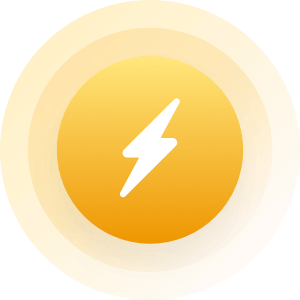|
Edited by
rnmnhnm
on
Mon 10/21/13 11:21 PM
|
|
|
Northern area of Pakistan
out of 14 highest mountain peaks (roof of world) 5 in Pakistan second highest K2 (28251 feet)is also in northern area of Pakistan that is more beautiful than Switzerland. |
|
|
|
|
|
Topic:
Smoking Challenge
Edited by
rnmnhnm
on
Sat 10/19/13 04:18 AM
|
|
|
SMOKING CESSATION
1. Behavioral approaches, ranging from clinician advice to intensive group programs, may improve cessation rates. 2. Pharmacologic therapy includes a. Nicotine replacement (available as transdermal patch, gum, lozenge, inhaler, or nasal spray) may need to be used long term (BC) b. Bupropion (Wellbutrin, Budeprion, Prexaton, Elontril, Aplenzin 150 mg bd) is atypical antidepressant that inhibit norepinephrine-dopamine reuptake and also acts as a nicotinic acetylcholine receptor antagonist (may cause hypertension). Bupropion is one of few antidepressants that do not cause sexual dysfunction. It is a drug of choice for the treatment of SSRI-induced sexual dysfunction. Bupropion is indicated as an aid to smoking cessation in those smoking more than 10 cigarette a day in combination with motivational support. It is contraindicated in patients with a H/O seizures (lowers seizure threshold) or eating disorders. Bupropion should be avoided in drugs that lower the seizure threshold e.g., antidepressants, antimalarial, theophylline, corticosteroids and tramadol. c. Varenicline (Champix 0.5/1 mg) (a partial agonist of nicotine acetylcholine receptors) has proved effective but wider use has revealed significant CNS side effects, including some reports of an increase in suicide. Current recommendations from the U.S. Surgeon General are that all adult, nonpregnant smokers considering quitting be offered pharmacotherapy, in the absence of any contraindication to treatment Combined pharmacotherapies (two forms of nicotine replacement, or nicotine replacement & bupropion), with or without behavioral approaches have also been recommended. 3. Simply telling a patient to quit succeeds 5% of the time. Advice alone in the form of a 3-minute consultation will result in 3% of patients still not smoking at 6 months. 4. Face to face support from a behavioral specialist will be effective in 7%. It is now recognized that medicines to relieve the nicotine craving combined with support from a smoking cessation specialist have the best results. Some trials quote up to 20% success with nicotine replacement patches or bupropion. 5. Acupuncture has success in between 5% and 15% depending upon the studies. |
|
|
|
|
|
NON-MEDICINAL THERAPEUTIC OPTIONS 1. EXERCISE a. In a review of 4 randomized controlled trials and 2 observational studies, exercise was associated with a reduction in dysmenorrhea symptoms. b. A more recent study found that vigorous exercisers (more than 3 times per week) reported less physical symptoms during menstruation in comparison with sedentary counterparts. In contrast, results from a retrospective questionnaire completed by a cohort of nurses indicated that although exercise was associated with an improvement in mood and stress, it was also associated with a 30% increase in dysmenorrhea symptom severity. 2. TOPICAL HEAT Topically applied heat vs. oral ibuprofen Low-level topical heat therapy was as effective as ibuprofen for the treatment of dysmenorrhea. Furthermore, there was faster improvement in pain relief when heat was applied with ibuprofen. 3. BEHAVIOURAL INTERVENTIONS used in the treatment of dysmenorrhea include procedures such as: a. Biofeedback b. Desensitization c. Lamaze exercise d. Hypnotherapy e. Relaxation training Case studies suggest that behavioural interventions may be effective in treating dysmenorrhea. Because of the limited studies no recommendation can be formulated at this time. 4. DIETARY/HERBAL SUPPLEMENTS 5. TRANSCUTANEOUS ELECTRICAL NERVE STIMULATION (TENS) / ACUPUNCTURE TENS involves use of electrodes to stimulate the skin at various frequencies and intensities in an attempt to diminish pain perception. TENS may be divided into high and low frequency. Unlike low-frequency TENS, high-frequency TENS provides more effective dysmenorrhea pain relief than placebo. High-frequency TENS may be considered as a supplementary treatment in women unable to tolerate medication. a. Acupuncture also involves stimulating nerve fibre receptors in an attempt to lock pain impulses. b. Adverse outcomes associated with high- frequency TENS (in over 10%) include muscle tightness, headaches, nausea and redness or burning of skin. 6. SPINAL MANIPULATION There is no evidence that spinal manipulation relieves dysmenorrhea. The data on the effectiveness of such interventions remain inconclusive and controversial. RECOMMENDATIONS Women who inquire about alternatives to relieve dysmenorrhea may be instructed that at the present time: 1. There is limited evidence that acupuncture may be of benefit 2. There is no evidence to support spinal manipulation as an effective treatment 3. There is limited evidence to support topical heat therapy. MEDICINAL THERAPEUTIC OPTIONS NON-HORMONAL MEDICAL TREATMENT Over-the-counter (OTC) medications to treat dysmenorrhea in Canada include: 1. Acetaminophen (Tylenol) 2. Acetaminophen plus pamabrom (Midol) 3. Acetylsalicylic acid (Aspirin) 4. Ibuprofen (Advil, Motrin) ACETAMINOPHEN (PARACETAMOL) 1. Acetaminophen is an analgesic/antipyretic drug, not a peripheral prostaglandin synthetase inhibitor, and is a weak cyclooxygenase (COX) inhibitor in the presence of high peroxide concentrations that are present in inflammatory tissues. 2. Acetaminophen produces analgesia by raising the pain threshold. 3. It is a safe drug when used in therapeutic dosages with a good gastrointestinal tolerance and no effect on hemostasis. 4. Acetaminophen can cause liver damage after three or more alcoholic drinks per day and can cross-react with ASA to produce analgesic-induced asthma. 5. Acetaminophen and pamabrom are indicated to provide temporary relief of dysmenorrhea. Pamabrom (trade name Diurex) is a mild and short-acting diuretic that relieves water retention. Pamabrom is available in combination with acetaminophen (paracetamol) for various conditions such as back pain and dysmenorrhea. RECOMMENDATIONS 1. NSAIDs: Women suffering from primary dysmenorrhea should be offered NSAIDs as a first-line treatment for the relief of pain and improved daily activity unless they have a contraindication to the use of NSAIDs. 2. Transdermal glyceryl trinitrate has a relaxing effect on myometrium. In a study comparing glyceryl trinitrate patch with diclofenac, both treatments significantly reduced the pain intensity score by 30 minutes. However, diclofenac continued to be effective in reducing pelvic pain for 2 hours whereas glyceryl trinitrate did not. Headache was significantly increased by glyceryl trinitrate. This study indicates that glyceryl trinitrate has a reduced efficacy and tolerability by comparison with diclofenac in the treatment of primary dysmenorrhea. 3. OCPs are second-line of treatment for primary dysmenorrhea. The use of OCPs is particularly advantageous if the patient also desires a method of birth control. The added contraceptive advantage may make OCPs a first-line therapy for some women. Combined oral contraceptive (COC) suppresses ovulation and endometrial tissue growth, thereby decreasing menstrual fluid volume and prostaglandin secretion with subsequent decrease in intrauterine pressure and uterine cramping. OCPs help alleviate symptoms of dysmenorrhea by both reducing menstrual flow and inhibiting ovulation. They also decrease prostaglandin secretion. They are 90% effective within 3 or 4 months of use. Continuous use of OCPs can be very helpful in reducing the number of menstrual cycles. During continuous OCP use, the patient takes “active” hormone pills for up to 12 weeks straight, eliminating the placebo pills and subsequent decreasing withdrawal bleeding. Seasonale (levonorgestrel/ethinyl estradiol tablets) 0.5 mg/0.03 mg is an extended cycle oral contraceptive formulation that provides 84 days of active pills. Studied have evaluated the safety and efficacy of longer use of active combined OCPs as well as continuous use of transdermal (Ortho Evra) and intravaginal (Nuvaring) hormonal contraceptives for dysmenorrhea. 4. Depot medroxyprogesterone acetate (MPA) and levonorgestrel intrauterine system (LN-IUS such as Mirena) are effective in the treatment of dysmenorrhea. They suppressing ovulation and also induce endometrial atrophy. One of its non-contraceptive benefits is amenorrhea (or reduction in menstrual blood loss) with a resultant reduction in the incidence of dysmenorrhea. NSAIDs NON-SELECTIVE There is over-production of uterine prostaglandins (higher levels of prostaglandins F2αand E2) as a contributing factor to primary dysmenorrhoea. NSAIDs inhibit the cyclooxygenase (COX) enzymes, thereby inhibiting the production of prostaglandins. They are the drugs of choice for primary dysmenorrhea. Which NSAIDs 4 NSAIDs: Naproxen, ibuprofen, mefenamic acid and aspirin (acetylsalicylic acid). Which NSAIDs is better 1. All 4 NSAIDs reduced restriction of daily life better than placebo, but only with ibuprofen and naproxen was this statistically significant. 2. Both naproxen & ibuprofen are better than aspirin. 3. On a risk-benefit assessment, ibuprofen was better than naproxen because of the side effects of naproxen. If there is no significant change in pain after a reasonable duration (approximately 3 months) of one NSAIDs regimen, it is sometimes helpful to try an NSAID from a different category (s). With the each prescribed regimen, it is important to assess patient compliance, such that maximum daily frequency and dose have been reached (s). If the patient has only partial relief from NSAIDs, switching directly to a narcotic is not appropriate until other alternatives have been explored (s). NSAIDs vs. acetaminophen There was little evidence of superiority of any NSAIDs with regard to either efficacy or safety. Affect on daily activities Women taking NSAIDs were significantly less likely to report restriction of daily activities and absenteeism from work or school than women taking placebo. |
|
|
|
|
|
Topic:
islam
|
|
|
I do believe videos posted by Dr Zakir Naik on YouTube are really helpful not only to understand Islam but more importantly to compare Islam with all other religions.
|
|
|
|
|







